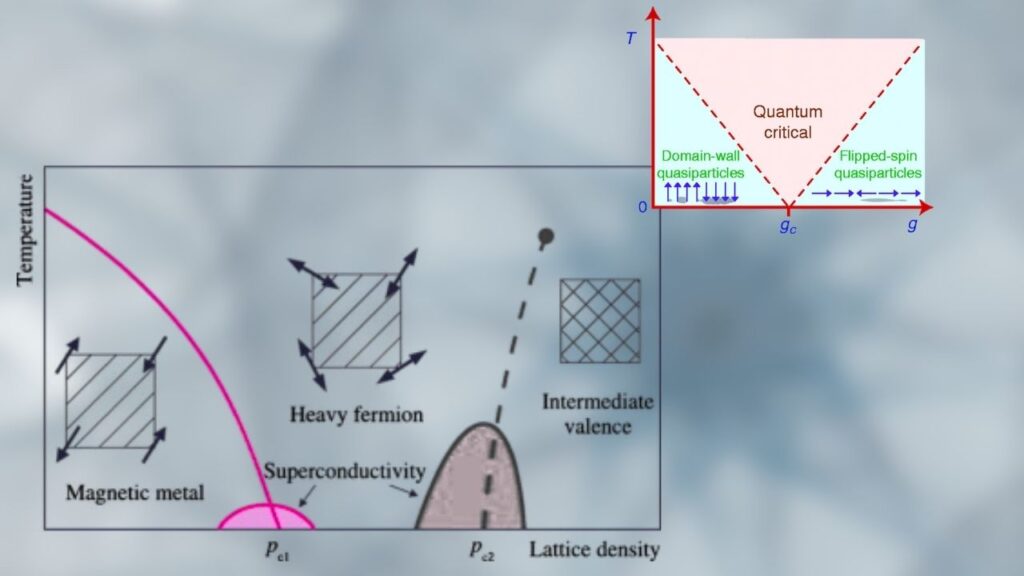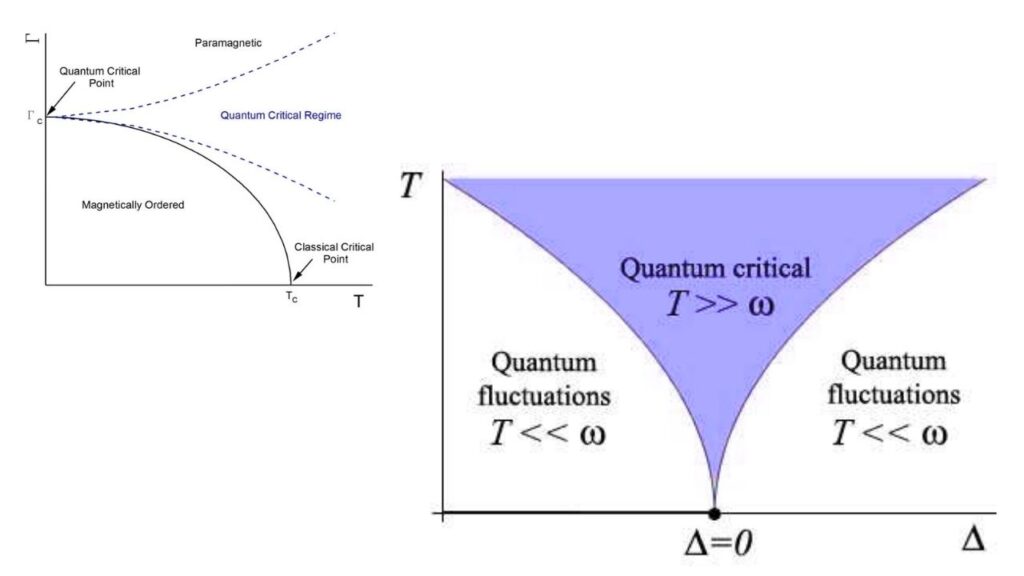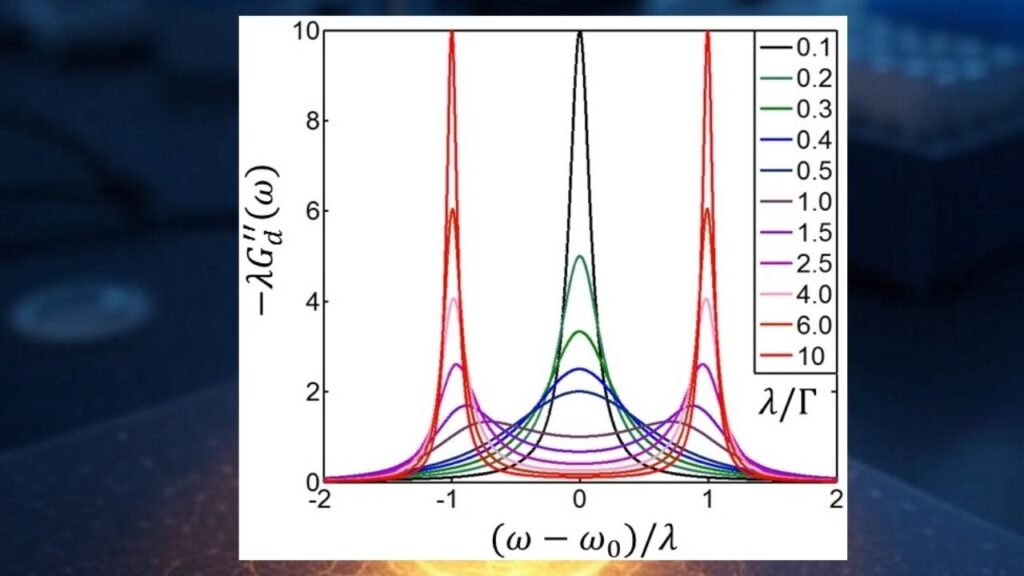Unusual Quantum Phenomena in Heavy Fermion Superconductor: Imagine a world where electricity flows with no resistance, where the tiniest particles behave in ways that seem to break the rules, and where scientists can “tune” materials to reveal hidden secrets. Welcome to the fascinating realm of heavy fermion superconductors—a special class of quantum materials that has recently amazed physicists with the discovery of unusual quantum phenomena, especially in systems where their critical behavior can be tuned like a radio dial.

In this article, we’ll explore what makes heavy fermion superconductors so unique, why the latest findings are a big deal for both science and technology, and how you—whether a curious student or a seasoned professional—can appreciate the magic behind these quantum marvels.
The observation of unusual quantum phenomena in heavy fermion superconductors with tunable criticality marks an exciting frontier in modern physics. By carefully adjusting the conditions in these remarkable materials, scientists are uncovering new states of matter, challenging old theories, and paving the way for future breakthroughs in technology and materials science.
Whether you’re a young learner fascinated by the wonders of quantum physics or a professional eager to stay at the cutting edge, the world of heavy fermion superconductors offers a glimpse into the quantum future.
What Are Heavy Fermion Superconductors?
Let’s start with the basics. Heavy fermion superconductors are a rare group of metals made from elements like cerium, ytterbium, or uranium. What makes them so “heavy” isn’t their weight, but how their electrons behave. In these materials, electrons interact with magnetic atoms, which slows them down and makes them act as if they’re thousands of times heavier than usual.
This heavy behavior leads to all sorts of strange and wonderful effects. For example, at extremely low temperatures—sometimes just a fraction of a degree above absolute zero—these materials can become superconductors. That means they conduct electricity perfectly, with zero resistance, thanks to pairs of electrons (called Cooper pairs) gliding effortlessly through the material.
But heavy fermion superconductors aren’t just another type of superconductor. They’re quantum materials, where the weird rules of quantum mechanics dominate. This makes them a playground for scientists who want to probe the deepest mysteries of matter and energy.
What Does “Tunable Criticality” Mean?
Here’s where things get really interesting. In many heavy fermion superconductors, scientists can tune the material—by changing the pressure, adding a bit of another element (doping), or applying a magnetic field—until it reaches a special point called a quantum critical point (QCP).

Think of a QCP as a kind of quantum tipping point. At this point, the material is balanced right at the edge between two different quantum states—like a seesaw perfectly level between two kids. On one side, the material might be magnetic; on the other, it’s not. At the QCP, the electrons can’t decide which state to be in, so they start behaving in completely new ways.
This “tunable criticality” means scientists can carefully control the conditions to explore the most exotic quantum effects, and even discover entirely new states of matter.
Why Are These Quantum Phenomena So Unusual?
When heavy fermion superconductors are tuned to their QCP, they often show behaviors that break the usual rules of physics. Here are some of the most exciting discoveries:
1. Strange Metal Behavior
Normally, metals obey simple rules: as you cool them down, their resistance drops in a predictable way. But near the QCP, heavy fermion superconductors become “strange metals.” Their resistance changes linearly with temperature, not in the usual quadratic way. This hints at a breakdown of the standard “Fermi liquid” theory that describes most metals.
2. Non-Fermi Liquid States
In these materials, the electrons don’t act like the usual crowd of independent particles. Instead, their collective behavior creates a “non-Fermi liquid” state, where the normal rules for energy and heat flow don’t apply. This is a hot topic in quantum physics, because it suggests new forms of quantum order.
3. Kondo Breakdown and Fermi Surface Jumps

At the QCP, the way electrons interact with magnetic atoms can suddenly change—a phenomenon called “Kondo breakdown.” This leads to a dramatic jump in the Fermi surface (the surface in energy space that separates filled from empty electron states), revealing a new phase of matter.
4. Unconventional Superconductivity
Instead of the usual mechanism (where vibrations of the atomic lattice help electrons pair up), superconductivity in these materials is thought to be driven by magnetic interactions. This makes them “unconventional” superconductors, which could help us understand high-temperature superconductivity and design new quantum devices.
5. Superconductivity Without External Tuning
A recent breakthrough came with the discovery of superconductivity in a ytterbium-based heavy fermion material, β-YbAlB₄. Remarkably, this material became superconducting at 80 millikelvin (that’s 0.08 degrees above absolute zero) without the need for chemical doping, magnetic fields, or pressure. This means quantum criticality can emerge naturally in some materials, opening new avenues for research.
How Do Scientists Study These Materials?
Physicists use a variety of tools to probe heavy fermion superconductors:
- Resistivity Measurements: By cooling the material and measuring how easily electricity flows, scientists can spot the onset of superconductivity and strange metal behavior.
- Magnetization Tests: Applying a magnetic field helps reveal how the electrons’ spins are arranged, and whether the material is near a QCP.
- Quantum Oscillation Experiments: These can detect sudden changes in the Fermi surface, signaling a Kondo breakdown.
- Sample Purity: Superconductivity in these materials is extremely sensitive to impurities. The cleanest samples show the most dramatic effects, with superconducting volume fractions up to 45% in the best cases.
Why Does This Matter for Science and Technology?
Understanding heavy fermion superconductors with tunable criticality isn’t just an academic exercise. Here’s why it’s important:
- New Physics: These materials challenge our understanding of how matter behaves at the quantum level, forcing scientists to develop new theories and models.
- Potential Applications: Unconventional superconductors could one day lead to more efficient power grids, faster computers, or even quantum computers that use exotic quantum states for processing information.
- Materials Science: Learning how to tune quantum criticality could help engineers design new materials with custom properties, tailored for specific tasks.
Step-by-Step Guide: Understanding Heavy Fermion Superconductors
Step 1: Learn the Basics of Superconductivity
- Superconductors are materials that conduct electricity without resistance at low temperatures.
- Traditional superconductors rely on vibrations in their atomic lattice to help electrons form Cooper pairs.
Step 2: Discover What Makes Heavy Fermions Special
- In heavy fermion materials, electrons interact with magnetic atoms, making them act much heavier than normal.
- This leads to slow-moving, strongly interacting electrons and a host of unusual quantum effects.
Step 3: Understand Quantum Critical Points (QCPs)
- A QCP is a special point where the material is balanced between two quantum states (like magnetic and non-magnetic).
- By tuning pressure, doping, or magnetic field, scientists can bring the material right to this critical point.
Step 4: Explore the Exotic Phenomena Near QCPs
- Near the QCP, materials can become strange metals, show non-Fermi liquid behavior, and even develop unconventional superconductivity.
Step 5: Appreciate the Practical Challenges
- These effects only appear at extremely low temperatures (often below 1 Kelvin).
- Sample purity is crucial—impurities can destroy superconductivity in these fragile materials.
Step 6: Stay Updated with the Latest Research
- Follow reputable journals and official resources for new discoveries.
- Attend conferences or join online communities focused on quantum materials and superconductivity.
Researchers Synthesize Elusive Cyclic Tri-Phosphirenium Ion, Advancing Main-Group Chemistry
James Webb Telescope Data Suggest Universe Might Be Inside a Huge Black Hole
Tsinghua’s Theater-Based Immersive Neuroaesthetics Study Sparks Public Interest
FAQs About Unusual Quantum Phenomena in Heavy Fermion Superconductor
Q1: What is a heavy fermion?
A heavy fermion is an electron in certain materials that acts as if it has a much larger mass than normal, due to interactions with magnetic atoms.
Q2: What is a quantum critical point (QCP)?
A QCP is a special condition where a material is balanced between two different quantum phases, often leading to exotic behaviors like non-Fermi liquid states.
Q3: Why are these materials important?
They help scientists understand new forms of quantum matter and may inspire future technologies like quantum computers and advanced superconductors.
Q4: Can heavy fermion superconductors work at room temperature?
No, so far these materials only become superconducting at very low temperatures—often below 1 Kelvin.






